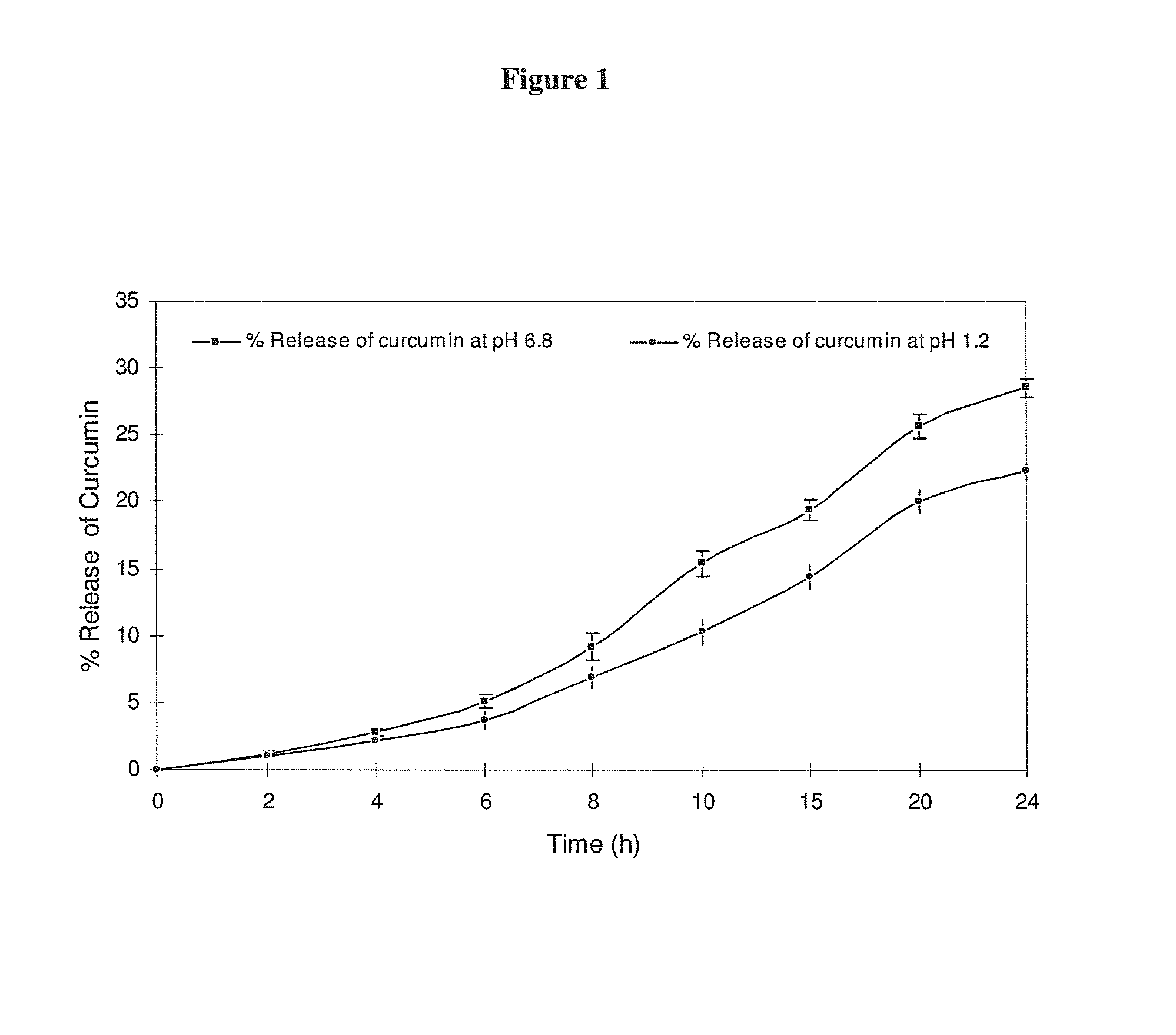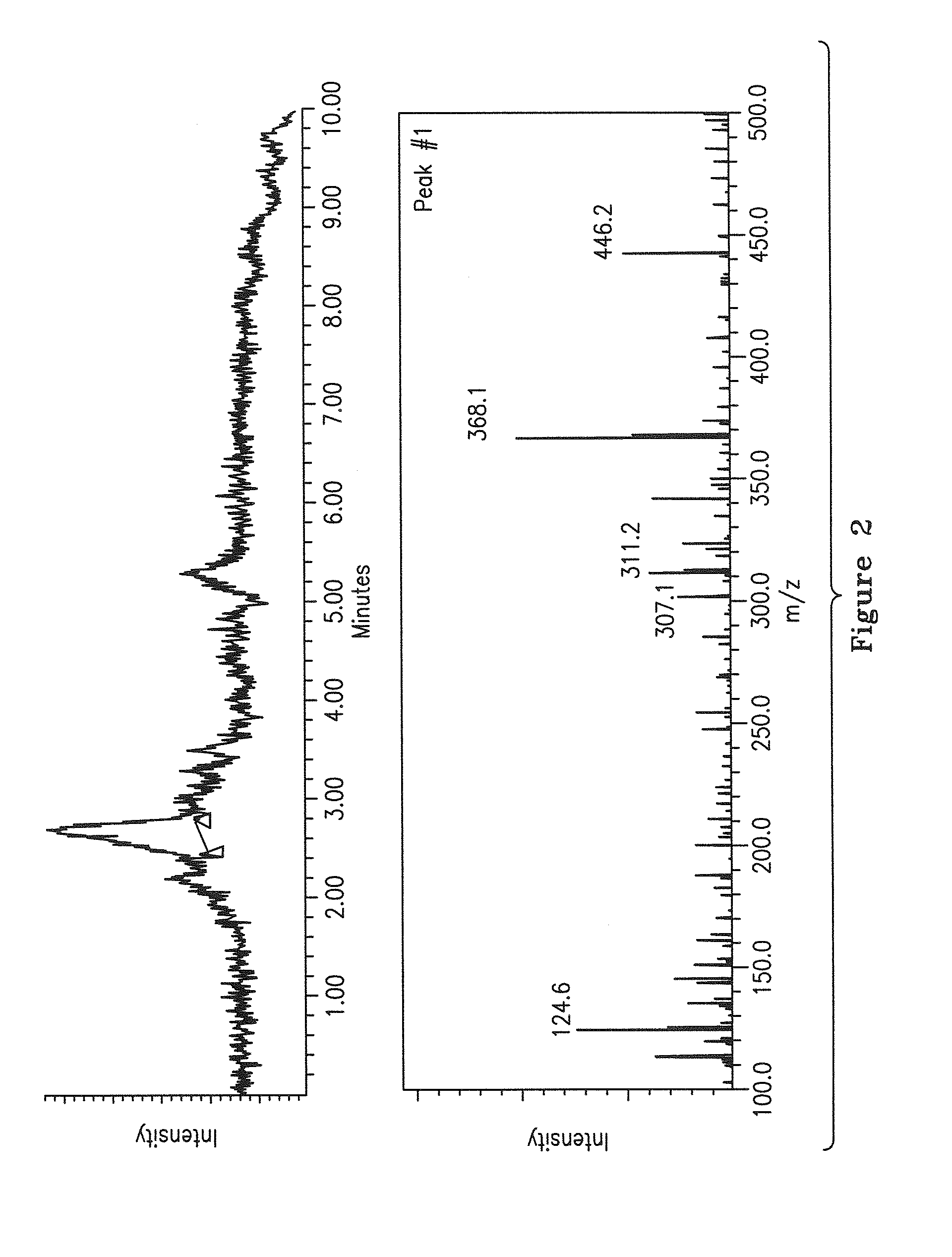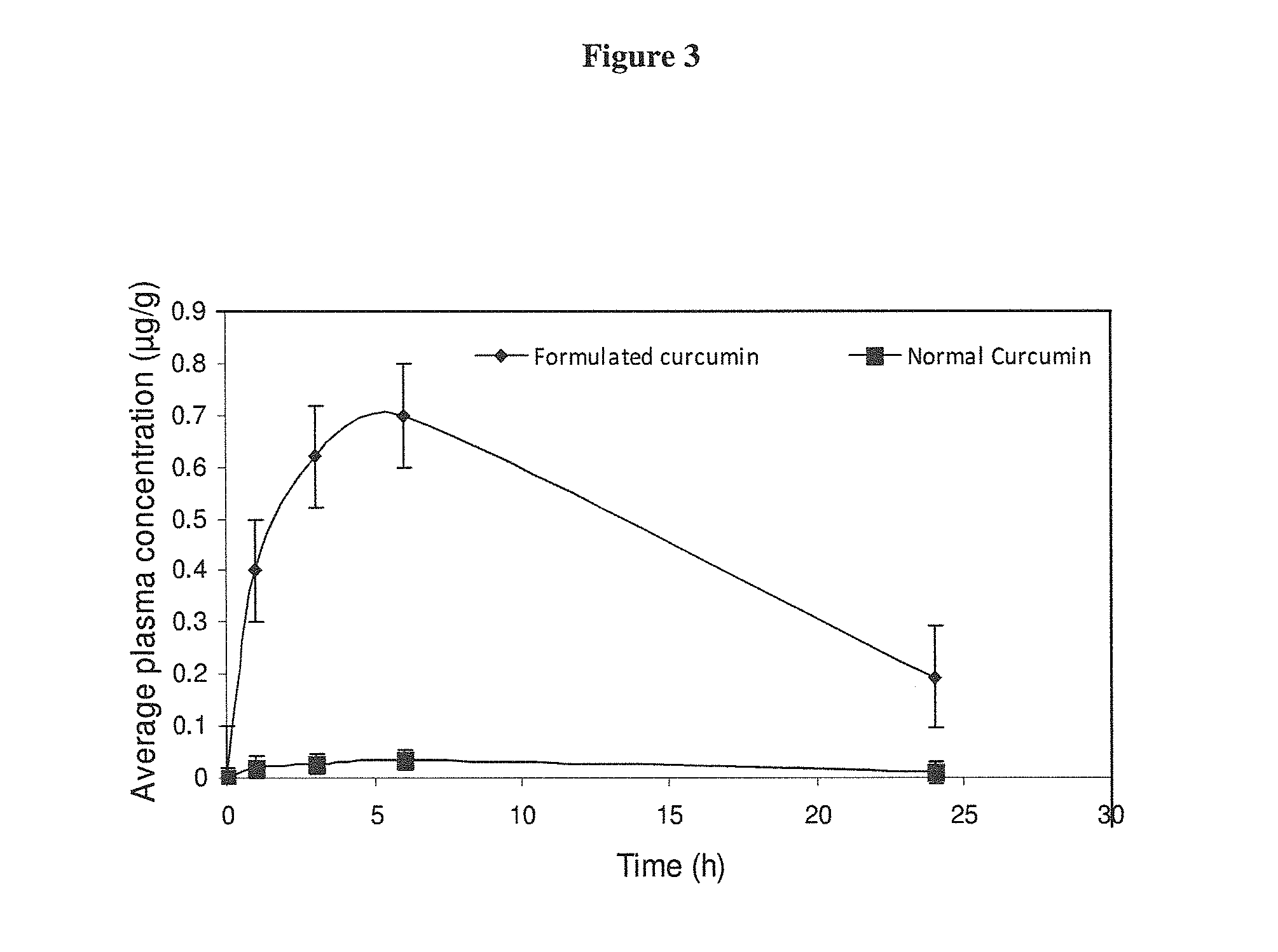Formulation containing curcuminoids exhibiting enhanced bioavailability
- Summary
- Abstract
- Description
- Claims
- Application Information
AI Technical Summary
Benefits of technology
Problems solved by technology
Method used
Image
Examples
example 1
[0055]5 Kg of dried turmeric rhizomes were flaked in a mechanical flakier and extracted with 20 liter acetone-hexane mixture, (80 / 20 v / v) in a stainless steel vessel for 4 to 12 hours. The extraction was repeated 4 times under similar conditions and the filtrate was evaporated to dryness using a rotary evaporator at 50° C. Crude pasty mass thus obtained (1000 g) was found to contain 32.4% curcuminoids by JECFA method employing UV / Vis spectrometric estimation of absorbance at 420 nm in acetone. The crude mass was then mixed with 0.5% w / v of isopropyl alcohol and kept for 3 days at room temperature. Crystallized curcuminoids are then separated by centrifugation, washed with isopropyl alcohol and dried to get 208 g of 92% pure curcuminoids. The same extraction and crystallization were repeated in ethyl alcohol to get 186 g of 91.2% curcuminoids. Above crystallization were further repeated to get more than 95% pure curcuminoids.
[0056]2 Kg of fenugreek seeds were swelled in water and sub...
example-2
[0058]The in vitro release profile of the loaded curcumin from the new formulation at pH 6.8 and pH 1.2 (to simulate stomach and colonic conditions) is illustrated in FIG. 1. 50 mg of formulated curcumin was dispersed in 10 ml phosphate buffer at pH 6.8 and 0.1M HCl at pH 1.2 for 24 hours and was kept in a sealed thermostated water bath set at 37±0.5° C. under constant shaking. 500 micro liter (μl) of solution was carefully withdrawn from the mixture without contamination of the curcumin particles and made up to 50 mL with acetone and the absorbance was measured at 420 nm using UV / VIS spectrophotometer. The concentration of the released curcumin was then calculated using a standard curve of curcumin in acetone. From the calibration curve plotted for absorbance verses concentration, the release kinetics of entrapped curcumin with time was estimated. Studies were performed in triplicate and mean cumulative percentage of released curcumin was calculated and plotted against time.
[0059]C...
example-3
[0060]The enhanced efficacy of the invention was tested in animal studies and in human volunteers. Formulated curcumin containing 40% curcumin microencapsulates were selected for animal studies. Male Wistar albino rats 200-250 g body weight, were fasted overnight and received either normal curcumin or formulated curcumin dissolved or suspended in a suitable aqueous solution containing 0.1% carboxymethylcellulose, at 250 mg / Kg body weight by oral gavage. At 30 minute post dose, animals were exsanguinated and blood was collected after each time point, ca. 0, 0.5, 1, 3, 5, 10 and 24 hours respectively into heparinized tubes and centrifuged at 6000×g for 15 minutes. Plasma was decanted and stored at −80° C. until analysis. Plasma samples at various time points up to 24 hour post administration were subjected to Concentration of curcumin in plasma at each time point was calculated as an average of sixteen HPLC measurements using methanol mobile phase which eluted total curcumin (free cur...
PUM
| Property | Measurement | Unit |
|---|---|---|
| Temperature | aaaaa | aaaaa |
| Temperature | aaaaa | aaaaa |
| Temperature | aaaaa | aaaaa |
Abstract
Description
Claims
Application Information
 Login to View More
Login to View More - R&D
- Intellectual Property
- Life Sciences
- Materials
- Tech Scout
- Unparalleled Data Quality
- Higher Quality Content
- 60% Fewer Hallucinations
Browse by: Latest US Patents, China's latest patents, Technical Efficacy Thesaurus, Application Domain, Technology Topic, Popular Technical Reports.
© 2025 PatSnap. All rights reserved.Legal|Privacy policy|Modern Slavery Act Transparency Statement|Sitemap|About US| Contact US: help@patsnap.com



